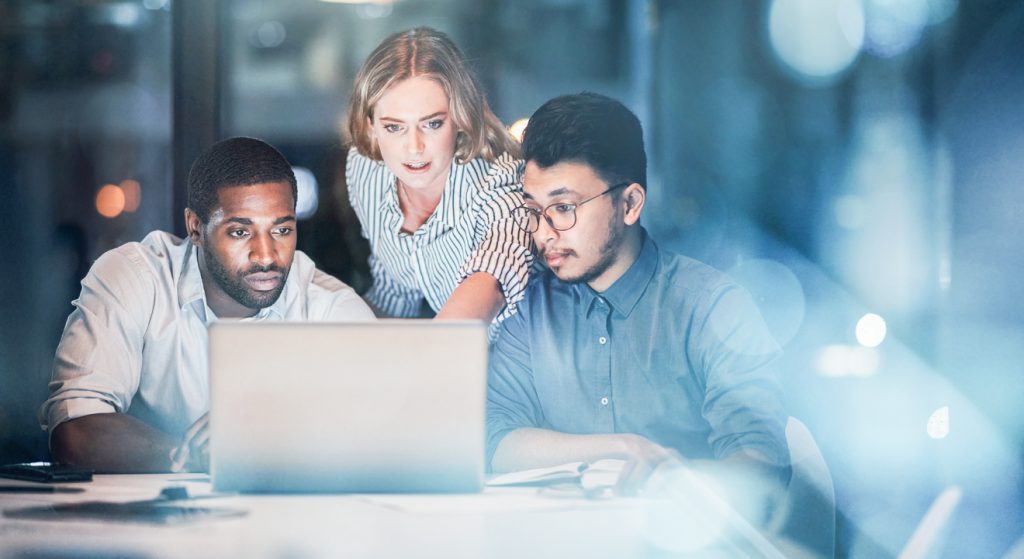Unraveling Low Code Testing for Fintech Companies

Low Code Testing: The Superhero All Fintech Companies Should Have!
Fintech companies are always looking for new ways to make their software better and faster. One such method they’re using is low code testing. This means instead of writing every single line of code by hand to test their programs, they use tools that help them do it quicker and easier.
Imagine you’re building a Lego tower. Instead of putting each brick in place one by one, low code testing is like having a special machine that helps you stack the bricks much faster. In Fintech, these tools/platforms are like magic machines that help testers and developers test their software without spending too much time doing it manually.
Fintech companies love these low-code testing platforms because they help them make sure their software works well and doesn’t have any problems. It’s like having a superhero sidekick that helps you catch any mistakes before they become big problems.
So, who’s this superhero the testing industry is raving about?
The global market for low-code platforms is likely to reach USD 65 billion by the year 2027.
As explained earlier, low code testing is a modern approach to testing applications that minimizes the need for writing code. It utilizes low-code test automation tools to streamline and expedite the testing process while maintaining accuracy and reliability. In essence, it empowers testers to create robust test cases with minimal coding effort, enabling faster and more efficient testing cycles.
While some coding might be involved, low code test automation tools significantly reduce the need to learn different frameworks and programming languages. This effectively eliminates the barrier for non-technical testers, enabling them to engage in testing activities with ease.
Here are some characteristics that make this feature a superhero material:
- Visual interface: Low code testing platforms typically provide visual interfaces that allow users to create test cases and automation workflows by dragging and dropping predefined components, such as test steps, assertions, and data sources.
- Simplified and Rapid Test Case Creation: Low-code testing tools provide intuitive interfaces that allow testers to create test cases effortlessly. The elimination of extensive programming knowledge requirements also enables the rapid creation of test cases, reducing the time and effort required to develop comprehensive test suites.
- Reusability: Test components and scripts can be reused across different test scenarios, saving time and effort in test creation and maintenance.
- Rapid Feedback Loops: With automated test execution, low-code testing facilitates quick feedback on software quality, allowing for prompt identification and resolution of issues.
- Minimal coding: While some level of scripting or coding may still be required in certain cases, low code testing minimizes the need for extensive programming knowledge. Users can often achieve complex testing scenarios without writing code from scratch.
Companies like Qyrus have mastered the low code game. They are a proven and trusted partner for several global Fintech enterprises looking to achieve their objectives.
Here is a 1-minute video to give a glimpse of what a low code automation platform can do.
How does low-code testing differ from traditional testing methodologies?
Low code testing differs significantly from traditional testing methodologies. In traditional methods, testing often involves writing extensive lines of code for test scripts, setting up testing environments, and manually executing tests. Low-code testing, as mentioned earlier, simplifies this process by providing visual interfaces, drag-and-drop functionalities, and pre-built components to create and execute tests with minimal manual coding.
- Accessibility and Ease of Use: Low code testing, particularly when employed alongside low code test automation tools, offers a significant advantage in accessibility and ease of use, especially for Fintech companies. Unlike traditional testing methods that often demand specialized technical skills, such as coding or scripting expertise, low code testing platforms are purposefully designed to be user-friendly and accessible to a broader range of users, including business analysts and domain experts involved in Fintech software development.
- Rapid Development and Deployment: As per an article by Medium, cloud-based low-code solutions allow banks to deploy applications instantly in the cloud. How? With the visual interfaces and drag-and-drop functionalities offered by low code testing platforms, Fintech teams can swiftly build and modify test automation scenarios without the need for extensive coding, facilitating rapid iterations and updates.
- Flexibility and Customization: Adaptability is paramount to any industry. Fintech companies can easily tailor test automation workflows to meet specific testing requirements and adapt them as needed, without being constrained by rigid scripting languages or frameworks.
- Reduced Maintenance Overhead: Fintech companies often operate under tight deadlines and stringent regulatory environments. Low code testing helps alleviate the maintenance overhead associated with traditional testing methods, allowing Fintech teams to focus more on innovation and compliance. With low code testing platforms, tests are easier to maintain and update over time, ensuring that Fintech software remains robust and compliant with regulatory standards.
- Enhanced Collaboration and Visibility: Collaboration and transparency are fundamental for success in Fintech. Low code testing promotes enhanced collaboration and visibility across teams involved in Fintech software development. The visual nature of low code testing platforms facilitates better communication between business stakeholders, testers, and developers within Fintech companies, fostering a shared understanding of testing objectives and outcomes. Additionally, built-in reporting and analytics capabilities in low code testing platforms enable Fintech stakeholders to track testing progress and performance effectively, ensuring alignment with business goals and regulatory requirements.
Overall, the use of low-code testing platforms like Qyrus can have a significant business impact.

Here is an interesting case study about a Retail Bank with 4500 employees and more than 5 million customers. This is how they drove their test coverage to 90% with Qyrus.
The Problem?
- Insufficient manual testing led to insufficient testing, and complex bug detection and impeded the creation of the CI/CD platform.
- Insufficient testing also led to the loss of customers due to inferior apps.
The Retail Bank chose Qyrus to transition their fully manual testing method to a low code automation testing approach.
The Outcome? Astonishing!
- Automated test scripts and cloud-hosted reports resulted in 2500 automated test executions per week.
- Repurposing and reusing test scripts improved test coverage by 90%.
- Leveraging Qyrus’ device farm, the bank scaled testing from 30 devices to 50 devices.
You can read the detailed case study here.





